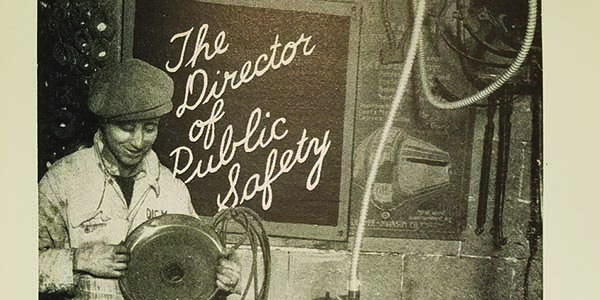RETRO 1974: Refilling Catalytic Converters At The Shop
1974 saw the first catalytic converters placed on vehicles and the use of unleaded gas. While Chrysler went with biscuits, GM, Ford and AMC went with beads. The beads were designed to be serviceable. With special tools, the platinum-covered beads could be removed through a hole and replaced with fresh beads if the owner poisoned the converter with leaded gas.
These are the beads that were in the converter. If the converter was damaged internally, the beads might escape out the tail pipe.
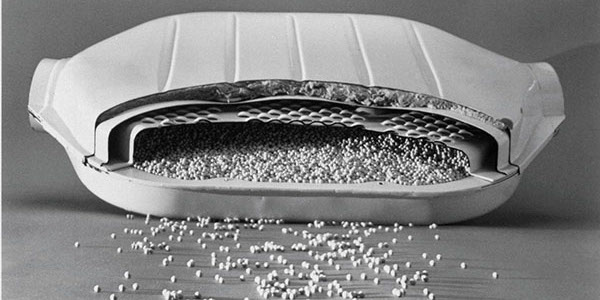
Retro: Roadside Display Credited For Selling Three Out Of Five Brake Jobs At Shop
In the April 1962 issue of Brake & Front End, editors discussed clever merchandising techniques. The Collins Brothers, George and James, in Marietta, GA, created their roadside spectacle on Route 41 with an old 1950 Ford Coupe and a discarded department store mannequin.
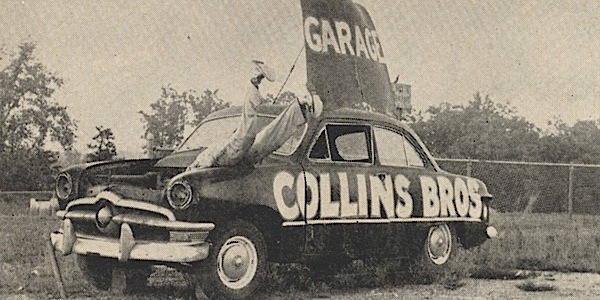
Retro: U.S. Steel Cone Brake Technology
BRAKE & FRONT END, May 1979: It is easy to forget that the most expensive gas prices in U.S. history (when you factor in inflation) were between 1978-1982. During this time, cars got smaller and more fuel efficient. It was one of those rare times in automotive history that automakers were able to sell on

The Race of Two Worlds: 1971 Questor Grand Prix
BRAKE & FRONT END, March 1971: In 1971, Formula 5000 in the U.S. was a direct rival to Europe’s Formula One. The Questor Grand Prix pitted the purpose-built 3.0L racing engines against 5.0L stock-block pushrod engines in very similar chassis. This non-championship race attracted 38 cars due the generous prize money.
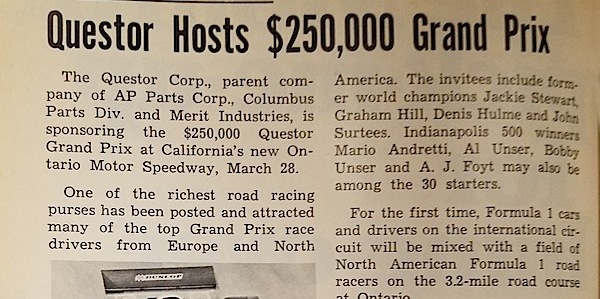
RETRO: 1949 Crosley First Disc Brake Used Airplane Parts
In 1949, the tiny Crosley two-door weighed just 1,000 lbs, and the brakes were hydraulically actuated 6-inch discs. The brakes were adapted from a Goodyear-Hawley design and used off-the-shelf aviation parts. While this article from the April 1949 issue touts the advanced design and jet-age technology of the Crosley, after a year, the system was dropped for two reasons. First, the aircraft alloy parts had corrosion problems. Second, airplanes typically use the brakes only during takeoff and landing. Thus, constant use of the brakes caused the caliper mechanism to fail prematurely.
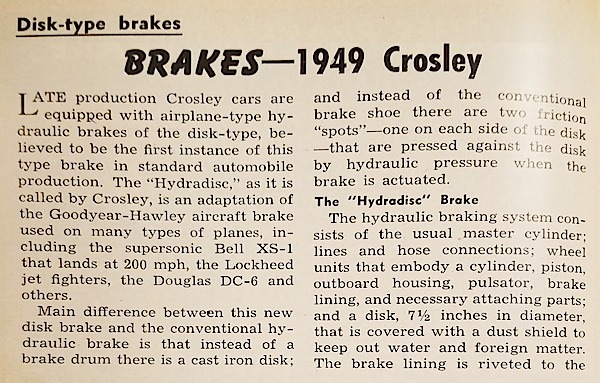
Retro: How Brakes & Brake & Front End Helped To Win WWII
During the depths of WWII, brake repair took on newfound importance. By 1943, the industrial might of the U.S. was at its height and was critical to the success of the war effort. Rationing of gasoline and rubber put increased importance on brakes that functioned properly since dragging brakes burned extra fuel and ones that locked up destroyed tires.
